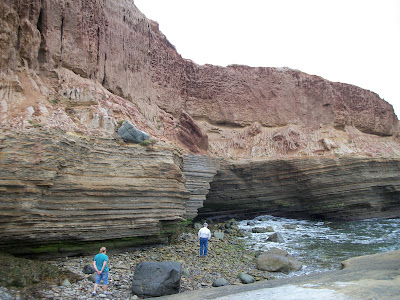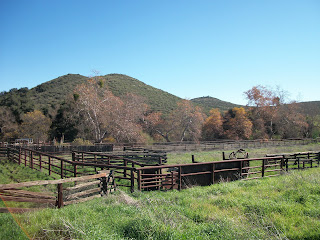
A friend of mine grew up in Hawaii. To my surprise, she high tailed it to the mainland as soon as she was old enough to escape what she described as the small town confines of the islands. As alien of a concept as this seemed to me, the realization quickly sunk in: being a native of any particular place, even if it’s considered paradise by some, can easily numb you to all that your town has to offer. Which leads me to this post on the
Cabrillo National Monument in San Diego, California.

As they say, the best way to reconnect with your home town is to shuttle out-of-town guests around for a week of sightseeing. Well, if you live in San Diego, then be sure to take Aunt Maude to Cabrillo next time she visits from Vermont. Chances are you're long overdue for a trip there anyway, and who doesn't want to smell the fresh, salty air and watch the waves roll in and crash against the cliffs?

Being a native San Diegan, I’m no stranger to Cabrillo National Monument. And like any true SD native, you were probably just a kid when mom and dad first took you up there to see
Juan Rodriguez Cabrillo's statue standing proudly before an awesome backdrop of the county. As if a minimal
entrance fee that now includes the access road to the tide pools could stop us. The visitor center is always fun to browse through with all the great books and information, but our most recent visit was all about the nature trails.
A note about the tide pools if you've never been: familiarize yourself with a
San Diego tide chart pronto, and visit during the next minus tide. You'll thank me for this later when you're up close and personal with starfish, sea anenome, marine hermit crabs, and maybe even a lobster or an octopus. Roll the ol' pant legs up, wear your best non-skid sport sandals, and keep your eyes peeled for all sorts of cool stuff. Did I mention to wear your best non-skid sport sandals? The algae-coated rocks will not be your friend if you don't tread carefully while scoping out the sealife. Prevent an embarrassing header into the very pool you're gazing into, and explore with care.




Most people are so wrapped up in the tidepools that they forget about the bayside trail, which starts near the
Old Point Loma Lighthouse but is easily overlooked if you're busy admiring the lighthouse's impressive Fresnel lens.

Confession time: when I see the same plants over and over I eventually start to ask myself what the heck they are. Unfortunately, my inquisitive nature is no match for my lack of an effective attention span, and all thoughts of Googling them one by one the minute I get home are quickly lost. Thus continues my pattern of staring endlessly at mysterious, unidentified plantlife.

This, thankfully, is remedied at Cabrillo National Monument by nifty signs placed strategically among the native plants, stating their common and scientific names. The bayside trail is lined with such signs, not to mention the rich aroma of sage hanging in the air. Then there's the constant traffic of boats coming and going from the
San Diego bay, and a cool view of North Island, Coronado, and beyond. But I digress.
On this visit, one plant sign in particular yielded a disappointing discovery. After years of admiring the delicate seed pods of a native plant clustered in groups along several San Diego nature trails, I found its undeserving name to be
Locoweed. Really? How could such a pretty plant be called a weed? And a loco one at that? I demand a renaming of this plant immediately, and make it something more deserving this time around.



Trekking up and down cliffs all morning works up a healthy appetite. Time for squid sandwiches from
Point Loma Seafoods! And if you're not hungry when you pull in, you will be after circling the lot for a half an hour trying to find parking. Be prepared for a crowd and brace your wallet for the cost, but above all enjoy some really killer seafood.
While you're doing that, give some thought to your home town and all it has to offer. Then make a little promise to yourself to rediscover those things that make the city you live in a unique paradise all its own.


 The trails winding through Hollenbeck Canyon Wildlife Area and the neighboring grasslands offer the option of several different routes that will take you on either a few miles of hiking, to six or more. Some hug the base of a small range of mountains, others take you down paths shaded by canopies of trees, and others lead up, down and around rocky rises.
The trails winding through Hollenbeck Canyon Wildlife Area and the neighboring grasslands offer the option of several different routes that will take you on either a few miles of hiking, to six or more. Some hug the base of a small range of mountains, others take you down paths shaded by canopies of trees, and others lead up, down and around rocky rises. 



















































